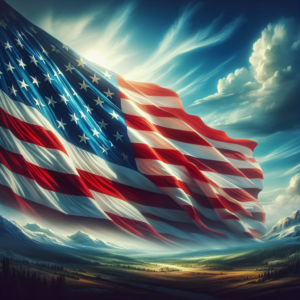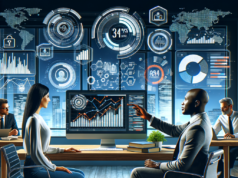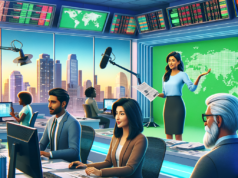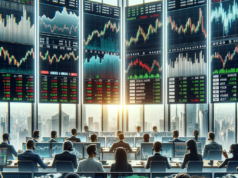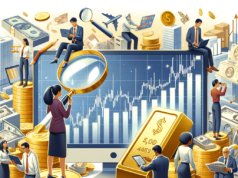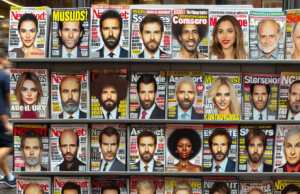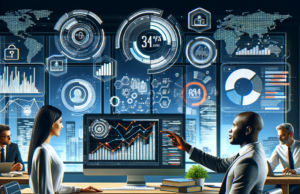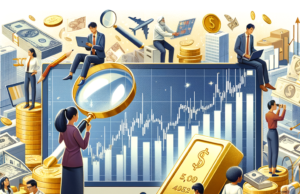In an increasingly interconnected world, global trade policies serve as the backbone of international commerce, influencing everything from consumer prices to job creation. These policies are not merely bureaucratic regulations; they are complex frameworks that shape the economic landscape of nations and affect the lives of billions. As countries navigate the intricacies of trade relationships, understanding the hidden forces at play becomes essential for policymakers, businesses, and consumers alike. This article delves into the multifaceted world of global trade policies, exploring their historical evolution, key players, and emerging trends that are reshaping the future of commerce.
Understanding Global Trade Policies: A Comprehensive Overview of Their Impact on Economies
Global trade policies encompass a wide array of regulations, agreements, and practices that govern the exchange of goods and services across borders. These policies are designed to facilitate trade, protect domestic industries, and promote economic growth. The impact of trade policies on economies is profound; they can stimulate growth by opening new markets for exporters, while also posing challenges for local industries that may struggle to compete with foreign imports. Additionally, trade policies influence inflation rates, employment levels, and the overall economic stability of nations. As such, understanding these policies is crucial for grasping the broader economic dynamics at play in the global marketplace.
Historical Context: The Evolution of Trade Policies and Their Economic Implications
The evolution of trade policies can be traced back to ancient times, with early civilizations engaging in barter and trade to meet their needs. However, the modern framework of global trade began to take shape in the 20th century, particularly after World War II, with the establishment of institutions like the General Agreement on Tariffs and Trade (GATT) and later the World Trade Organization (WTO). These institutions aimed to reduce trade barriers and promote free trade among nations. Over the decades, trade policies have shifted in response to economic crises, technological advancements, and changing political landscapes. The implications of these shifts are significant; for instance, the rise of protectionism in recent years has led to trade wars that disrupt global supply chains and impact economic growth worldwide.
Key Players in Global Trade: Governments, Corporations, and International Organizations
The landscape of global trade is shaped by a diverse array of stakeholders, including governments, multinational corporations, and international organizations. Governments play a crucial role in formulating trade policies that reflect national interests, often balancing the need for economic growth with the protection of local industries. Corporations, particularly large multinationals, wield significant influence over trade policies through lobbying efforts and their ability to relocate production to countries with favorable trade conditions. International organizations, such as the WTO and regional trade blocs like the European Union, facilitate negotiations and establish rules that govern trade relationships. The interplay between these key players creates a complex web of interests that can either promote or hinder global trade.
The Role of Tariffs and Trade Agreements in Shaping Economic Landscapes
Tariffs and trade agreements are two fundamental tools used by governments to regulate international trade. Tariffs, which are taxes imposed on imported goods, can protect domestic industries by making foreign products more expensive. However, they can also lead to retaliatory measures from trading partners, resulting in trade disputes that can escalate into broader economic conflicts. On the other hand, trade agreements, such as free trade agreements (FTAs) and regional trade agreements (RTAs), aim to reduce or eliminate tariffs and other trade barriers, fostering closer economic ties between nations. These agreements can enhance market access for exporters and create a more competitive environment, but they also raise concerns about job losses in sectors unable to compete with cheaper imports. The balance between tariffs and trade agreements is crucial for shaping the economic landscapes of participating countries.
Emerging Trends: How Technology and Sustainability Are Influencing Trade Policies
In recent years, emerging trends such as technological advancements and sustainability have begun to significantly influence global trade policies. The rise of e-commerce and digital trade has transformed how goods and services are exchanged, prompting governments to adapt their policies to address issues such as data privacy, cybersecurity, and digital taxation. Additionally, the growing emphasis on sustainability is reshaping trade policies as countries seek to align their economic activities with environmental goals. This includes implementing regulations that promote sustainable sourcing, reducing carbon footprints, and encouraging circular economies. As these trends continue to evolve, they will undoubtedly play a pivotal role in redefining the parameters of global trade.
Future Outlook: Predicting the Next Decade of Global Trade Dynamics and Policies
Looking ahead, the next decade of global trade dynamics is likely to be characterized by increased volatility and uncertainty. Factors such as geopolitical tensions, climate change, and technological disruption will continue to challenge traditional trade frameworks. The rise of protectionism and nationalism may lead to a reevaluation of existing trade agreements, while emerging economies will seek to assert their influence on the global stage. Furthermore, the integration of artificial intelligence and automation into supply chains could revolutionize production and distribution processes, necessitating new trade policies that address these changes. As nations grapple with these complexities, the ability to adapt and innovate will be crucial for fostering resilient and sustainable trade relationships in the years to come.
In conclusion, global trade policies are intricate systems influenced by a multitude of factors, including historical context, key players, and emerging trends. As the world continues to evolve, understanding these policies becomes increasingly vital for navigating the complexities of international commerce. The interplay between tariffs, trade agreements, technology, and sustainability will shape the future of global trade, presenting both challenges and opportunities for economies worldwide. By unraveling the hidden forces that drive these policies, stakeholders can better prepare for the dynamic landscape of global trade in the years ahead.

